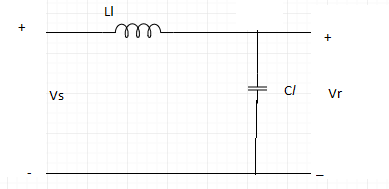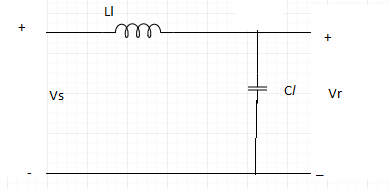This set of Power Systems Multiple Choice Questions & Answers (MCQs) focuses on “Line Compensation – 1”.
1. The instantaneous voltage wave in the long transmission line is a function of _____________
a) time and distance
b) time
c) distance
d) time, distance and reactive inductance
View Answer
Explanation: It will be a function of time and distance.
2. At any point along the line, the instantaneous voltage is ___________
a) sum of incident and reflected voltage
b) incident voltage
c) sum of incident and refracted voltage
d) twice the incident voltage
View Answer
Explanation: V(t) = Vincident+Vrefracted.
3. The equation given below is the voltage equation,
![]()
Then it is ________________
a) reflected wave receiving to sending end
b) reflected wave sending to receiving end
c) incident wave from receiving end to sending end
d) refracted wave from receiving end to next end
View Answer
Explanation: From the equation, cos(wt-βx+Ф2), it is clear that the wave is travelling in left to right and the amplitude is reduced, so it’s a reflected wave.
4. When can an incident wave not distinguish between the termination and an infinite continuation of line?
a) When line is terminated by its characteristic impedance
b) When line is terminated by its surge impedance
c) When line is open
d) When line is terminated by its characteristic and surge impedance
View Answer
Explanation: The characteristic (surge) impedance at the receiving end will cause a confusion for the incident wave.
5. Ferranti effect is more prominent due to ____________
a) line capacitance
b) surge capacitance
c) stray capacitance
d) all of the mentioned
View Answer
Explanation: Line capacitance causes the no load receiving end voltage to be more than receiving end.
6. The voltage rise happening at the receiving end due to the line charging capacitance has a magnitude of _______________
a) ω2CLl2
b) ω2CLl2/2
c) ω2l2/v2
d) ω2CLl2 and ω2l2/v2
View Answer
Explanation: The circuit diagram for the LTL is
Is= jVswCl
Vr = Vs – Is(jwLl) = Vs + Vsw2CLl2
=Vs(1+ w2CLl2).
7. The receiving end voltage at the no load will be ____________
a) Vs(1+ w2CLl2)
b) (1+ w2CLl2)
c) Vs/(1+ w2CLl2)
d) Vs
View Answer
Explanation: The circuit diagram for the LTL is

Is= jVswCl
Vr = Vs – Is(jwLl) = Vs + Vsw2CLl2
=Vs(1+ w2CLl2).
8. If a line is considered with negligible power losses, then the real power transmitted will be proportional to sinδ.
a) True
b) False
View Answer
Explanation: Pr = |Vs||Vr|(sinδ)/X.
9. If a line is considered with negligible power losses, then the real power transmitted will be proportional to ___________
a) sinδ
b) cosδ
c) δ
d) sin2δ
View Answer
Explanation: Pr = |Vs||Vr|(sinδ)/X.
10. If a line is considered with negligible power losses, then the reactive power transmitted is proportional to receiving end voltage.
a) True
b) False
View Answer
Explanation: Its incorrect, Q depends on the voltage drop across the line.
Sanfoundry Global Education & Learning Series – Power Systems.
To practice all areas of Power Systems, here is complete set of 1000+ Multiple Choice Questions and Answers.
If you find a mistake in question / option / answer, kindly take a screenshot and email to [email protected]
- Apply for Electrical Engineering Internship
- Check Electrical Engineering Books
- Practice Electrical & Electronics Engineering MCQs
- Practice Electrical Engineering MCQs
- Check Power System Books

